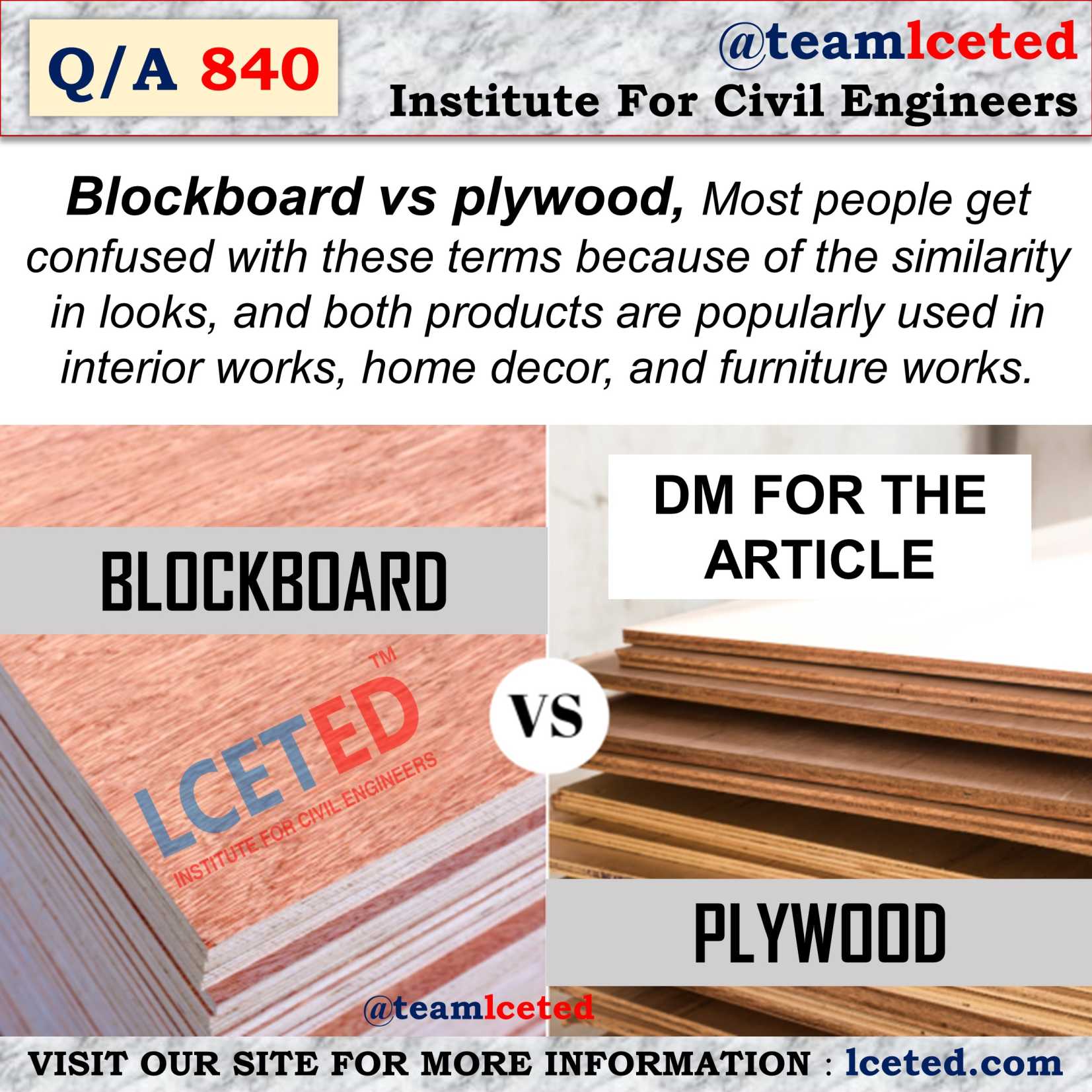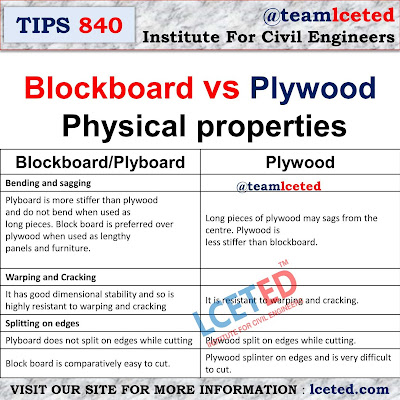Plywood vs Blockboard
Plywood and blockboard are two separate and distinct
things. In this article, we will look at the differences between these two types
of engineered woods
The
main differences between the two are listed below.
Variation In Composition and
How They are Made.
Plywood sheets commonly used in the manufacture of wooden
furniture are made from several thin sheets of individual veneers - wood
(layers/pieces of wood). All these layers are pressed together to form a
plywood sheet. If all of these individual layers of wood are derived from one
hardwood, the plywood sheet usually obtained is called 100% hardwood plywood.
Also Read: All You Want To Know About Plywood To Use On Interior Work
The core of the blockboard, on the other hand, is made of solid wood
blocks (these blocks are rectangular blocks/strips built from softwood).
All of these small blocks are approximately the same size and are set from end
to end to form the entire Blockboard core. Like plywood, an upper and lower
veneer (wooden layer) is bonded/glued to these blocks to create faces/surfaces.
Externally the plywood and
blockboard are both identical (especially if you do not see the edges of the
board), although the pictures above prove that the composition of the blockboards
is completely different.
The difference in The Way They are
Used.
Although plywood is
suitable for most furniture-making needs, it tends to sag or bend when very
long pieces are used. In such cases, it is preferable to use blockboards rather
than plywood.
For example, when long
pieces of wood are needed for furniture such as long tables or countertops and
some load-bearing benches, blockboards are preferred over plywood. Other common
uses of Blockboard such as doors, panels and partitions.
The difference in Material Used.
Best quality commercial and
marine plywood are made using veneers that are thicker and heavier than softwood. Hardwood is considered to be a stronger and more durable material than
softwood. An example of hardwood is
something like teak wood
Blockboards are usually
sandwiched between hardwood veneers with a centre made of softwood blocks
(e.g. a mango tree). Sometimes two veneers are used on either side to reinforce
the blockboard.
The softwood core makes the
board lighter in weight, however, the use of solid wood blocks ensures that it
is strong enough to withstand significant loads.
Also Read: Solid Teak Wood Vs Plywood | Pros And Cons | Homeslibro
Differences in workmanship
Unlike plywood, which is
uniform throughout its length and width, blocks of blackboards may have small
gaps between them that cannot be seen from the outside. Due to this the nails driven
to the boards (for example to attach a frame to the board) can sometimes go
into these gaps instead of solid wood. However, this is usually not a major
drawback.
Ease of handling
Strength and durability
Water and moisture resistant properties
Physical properties
Sizes Available
Conclusion
Plywood and blockboard will be selected depending on the application. Blockboards are preferred over plywood for elongated elements such as furniture, shelves, desks, etc. Plywood is recommended for kitchen cabinets and interior work, where the gaps should be less and carry more loads. Blockboard is preferred for partitions, doors, etc.
Also
Read: How Choosing The Right Kind Of
Plywood Can Save You Money? - Homeslibro
If you find
This information is helpful, please share it.
Thanks! For reading the article...















great post . thankyou you for sharing useful information. we are also provider of block board plywood
ReplyDelete